 As a little girl who grew up in the 80s, I can remember playing with my Barbie “Dream House” for hours. I would carefully place Barbie, Ken, and Skipper around the table to eat with their tiny plastic forks, then sit them on their red velvet couch to watch their make-believe television. Yep. Those were the days. So imagine how my inner child did backflips when I learned about the dollhouse exhibit inside our Art Museums of Colonial Williamsburg. I just had to see it for myself. I just had to.
As a little girl who grew up in the 80s, I can remember playing with my Barbie “Dream House” for hours. I would carefully place Barbie, Ken, and Skipper around the table to eat with their tiny plastic forks, then sit them on their red velvet couch to watch their make-believe television. Yep. Those were the days. So imagine how my inner child did backflips when I learned about the dollhouse exhibit inside our Art Museums of Colonial Williamsburg. I just had to see it for myself. I just had to.
The exhibit is called The World Made Small and it runs through the beginning of September. Looking into each tiny window was like peeking into the past. I could picture children more than a century ago, lost in their imaginations, as they moved their dolls from room to room, pretending to eat, sleep, and play.
IT’S A SMALL (BIG) WORLD AFTER ALL
 The featured house is a massive one from 1900 and when I say massive, I mean it. It’s roughly ten feet long and is more of a doll “mansion” than a dollhouse. According to Jan Gilliam, Manager of Exhibit Planning for Colonial Williamsburg, a contractor saved it from a Long Island home that was scheduled for demolition. After rescuing it, he took it to FAO Schwarz in New York City where it was part of a window display fora few months. Gilliam says it didn’t take us long to discover it and snatch it up. We’ve been filling it with 19th-century furnishings ever since.
The featured house is a massive one from 1900 and when I say massive, I mean it. It’s roughly ten feet long and is more of a doll “mansion” than a dollhouse. According to Jan Gilliam, Manager of Exhibit Planning for Colonial Williamsburg, a contractor saved it from a Long Island home that was scheduled for demolition. After rescuing it, he took it to FAO Schwarz in New York City where it was part of a window display fora few months. Gilliam says it didn’t take us long to discover it and snatch it up. We’ve been filling it with 19th-century furnishings ever since.
From the hand-carved grandfather clock to the the itty bitty sheets of music to the teeny tiny brush and mirror—every single room is filled with wonder. If you look closely, you can even spot the miniature versions of the very same paintings that hang on our museum walls. Each portrait was painstakingly re-created by our volunteers and staff members.
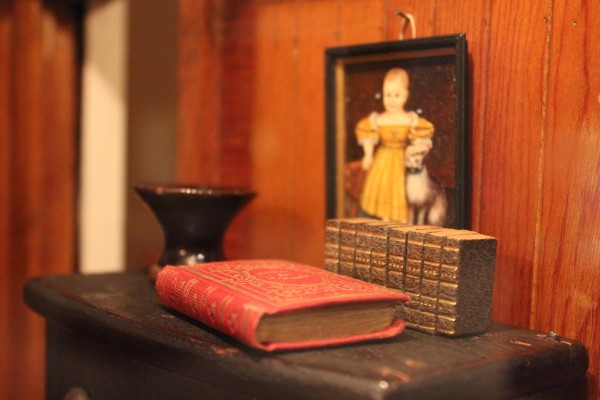
Given its size, the house breaks apart into a few different pieces which makes it easier to take down and store when it isn’t on display. It also comes with an attached kitchen and detached tool shed. Just like the main house, each room includes scaled-down versions of what you’d expect to see in the same real-life spaces, right down to the tiny tea kettle in the cupboard.
OLDIE BUT A GOODIE
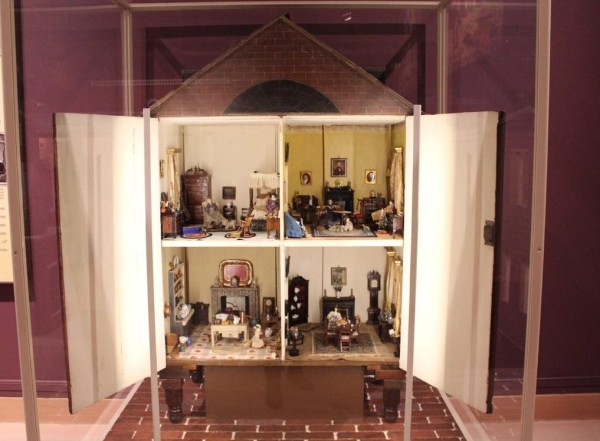 Also on display is one of the earliest American dollhouses first built for twin sisters in Philadelphia in 1820. Every generation that followed worked to preserve it until it was eventually donated to the Art Museum sometime in the 1980s. Before gifting it, the Rumford family spent the past century filling the house with tiny sentimental replicas of family heirlooms, including a chest-on-chest made of wood from a cigar box.
Also on display is one of the earliest American dollhouses first built for twin sisters in Philadelphia in 1820. Every generation that followed worked to preserve it until it was eventually donated to the Art Museum sometime in the 1980s. Before gifting it, the Rumford family spent the past century filling the house with tiny sentimental replicas of family heirlooms, including a chest-on-chest made of wood from a cigar box.
The original predates the actual dollhouse, a wedding gift built from 1775 that had been passed down. What’s even cooler about this piece of furniture is that you can also see the actual antique on display in the adjacent room.
MORE CHILD’S PLAY
 Given their size and pricey decorations, these houses were initially a luxury only upper-class families could afford. You can peruse one of them that belonged to a Virginia governor’s granddaughter.
Given their size and pricey decorations, these houses were initially a luxury only upper-class families could afford. You can peruse one of them that belonged to a Virginia governor’s granddaughter.
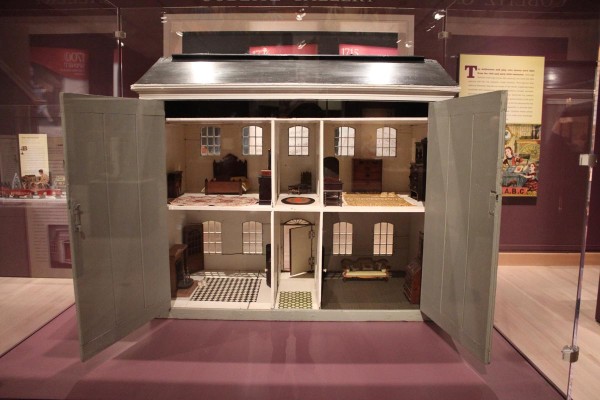 Over the years, dollhouses became more affordable to all families. Fold-up cardboard houses became popular because they were easy to put away after playtime and didn’t require nearly as much furniture or “accessories.” The furniture and dolls were usually made of simple paper.
Over the years, dollhouses became more affordable to all families. Fold-up cardboard houses became popular because they were easy to put away after playtime and didn’t require nearly as much furniture or “accessories.” The furniture and dolls were usually made of simple paper.
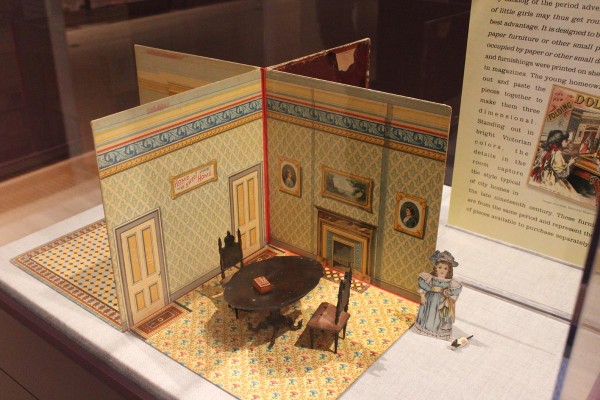 There were also single rooms like the kitchen that allowed a little girl to keep adding to her collection, learning life skills as she played.
There were also single rooms like the kitchen that allowed a little girl to keep adding to her collection, learning life skills as she played.
 And eventually, in the late 19th century, dollhouses started to get mass-produced. By this time, most little girls had one in her toy collection.
And eventually, in the late 19th century, dollhouses started to get mass-produced. By this time, most little girls had one in her toy collection.
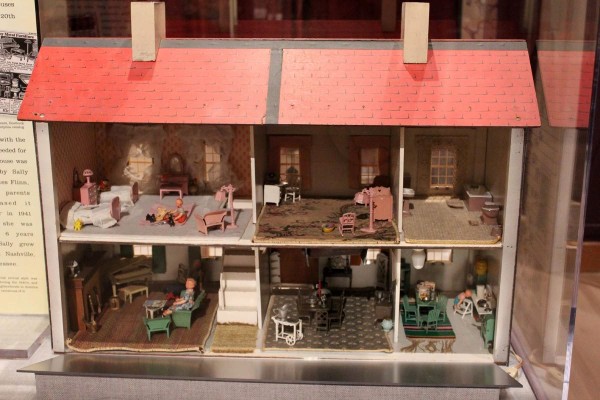
BOYS WILL BE BOYS
Play sets weren’t just for girls in the 19th century. Part of the museum exhibit also includes a miniature fort, soldiers’ campsite, and a farm.
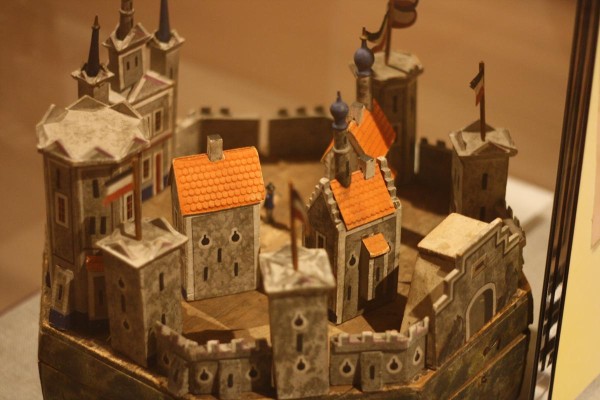
Do you remember playing with a dollhouse as a child? What was your favorite part about it? Is it still in your family?
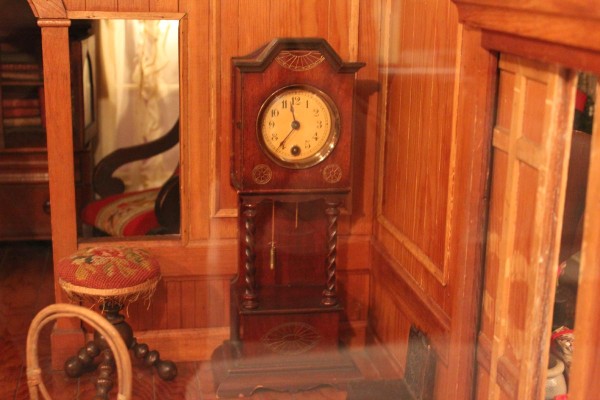
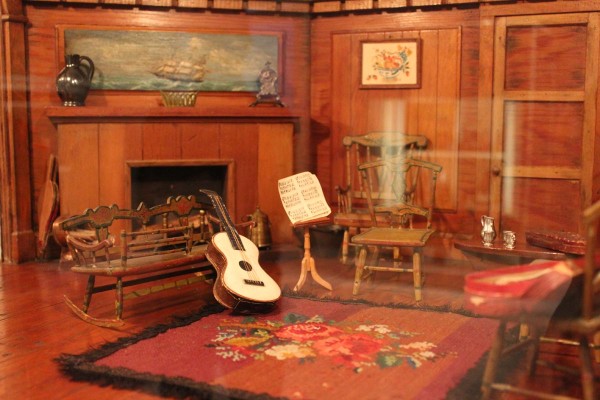
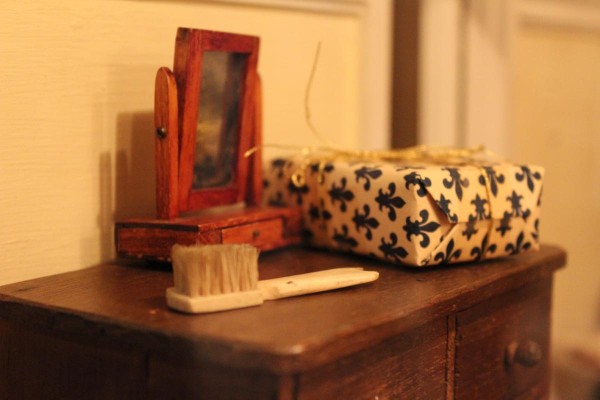
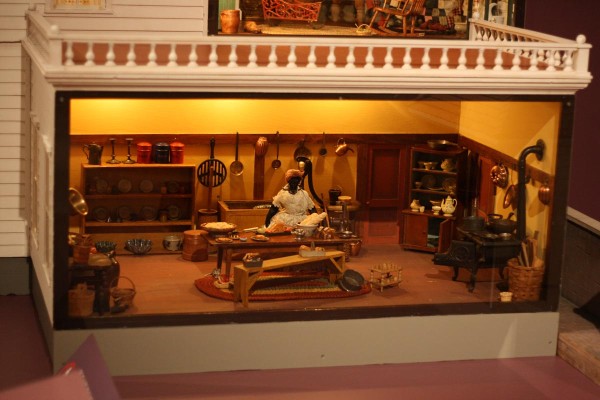
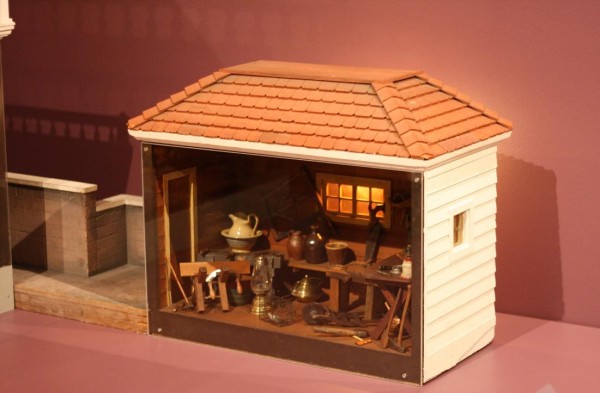

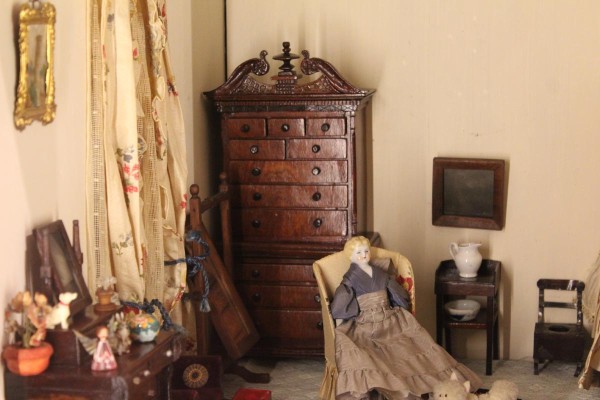
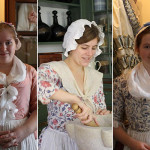
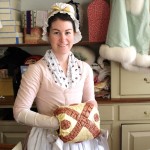
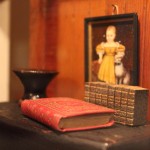
One of my longtime Christmas Day traditions was to visit the dollhouse exhibit at the old Folk Art Museum (now the spa). I never got tired of looking at all the tiny details in each room!
I was lucky to pick up a copy of ‘Tasha Tudor’s Dollhouse’ on eBay a number of years ago and enjoyed being able to revisit the rooms at my leisure.
What a great idea! I just learned of the Tudor’s Dollhouse from another blog reader.
Where is Tasha Tudors dollhouse? So many of us would love to see it!
Nancy - I checked with Jan Gilliam from the Museums and this is what she had to say: “We had the Tasha Tudor dollhouse on loan for several years and displayed it several times. After Tasha Tudor died in 2008, the loan was recalled by the family. It was delivered back to the family in Vermont a couple of years ago. According to the family website, the dollhouse contents are on display at Corgi Cottage and thus can only be seen during special tours of the house offered by the family. ”
I hope this helps - Jess
I was excited to read your article about the AARFAC doll houses! I have a copy of the fabulous book, “Dollhouses, Miniature Kitchens, and Shops from the AARFAC” written by Susan Hight Rountree in 1996. The cover features the Long Island Dollhouse you have pictured above. I am so very proud to say that my mother, who was an avid miniaturist, made and donated the dining room chandelier. A very small contribution, but a most endearing connection to the material culture and American folk art so beautifully preserved for all to enjoy at Colonial Williamsburg.
Ann, what a great story. Thank you so much for sharing! The next time I’m at the museum, I will look for it. I received your email and thank you so much for bringing to my attention that our photo uploader has disappeared. I will ask Brian to look into it on Monday. Once it’s up, I’d love for you to share your picture with all of our readers. Have a great weekend!